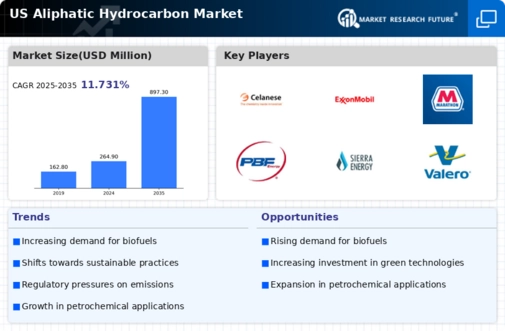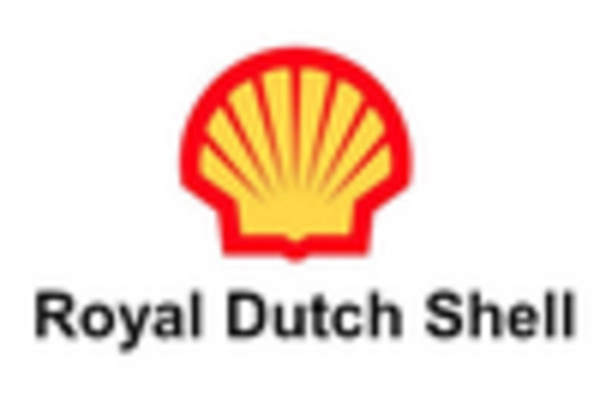Rising Demand for Solvents
The aliphatic hydrocarbon market experiences a notable increase in demand for solvents, particularly in the paint, coatings, and adhesives sectors. As industries seek to enhance product performance and reduce volatile organic compounds (VOCs), the preference for aliphatic hydrocarbons as effective solvents is growing. In 2025, the market for solvents is projected to reach approximately $10 billion, with aliphatic hydrocarbons accounting for a significant share. This trend is driven by the need for environmentally friendly solutions that comply with stringent regulations. The aliphatic hydrocarbon market is thus positioned to benefit from this shift towards sustainable solvent options, as manufacturers adapt their formulations to meet consumer expectations and regulatory requirements.
Growth in Automotive Sector
The automotive sector's growth is a significant driver for the aliphatic hydrocarbon market, particularly in the production of fuels and lubricants. As the demand for high-performance fuels increases, aliphatic hydrocarbons are favored for their properties that enhance engine efficiency and reduce emissions. In 2025, the automotive industry is projected to reach a market value of $1 trillion, with a substantial portion allocated to fuel production. The aliphatic hydrocarbon market stands to gain from this trend, as manufacturers seek to develop cleaner and more efficient fuel formulations. This alignment with environmental goals further solidifies the position of aliphatic hydrocarbons in the automotive sector.
Expansion of Petrochemical Industry
The aliphatic hydrocarbon market is significantly influenced by the expansion of the petrochemical industry in the United States. With the increasing production of ethylene, propylene, and other derivatives, the demand for aliphatic hydrocarbons as feedstock is expected to rise. In 2025, the petrochemical sector is anticipated to contribute over $400 billion to the US economy, with aliphatic hydrocarbons playing a crucial role in the production of various chemicals and plastics. This growth indicates a robust market for aliphatic hydrocarbons, as they are essential for the synthesis of numerous products. The aliphatic hydrocarbon market is likely to thrive as the petrochemical sector continues to evolve and expand its capabilities.
Increased Use in Personal Care Products
The aliphatic hydrocarbon market is witnessing a surge in the use of these compounds in personal care products, including cosmetics and skincare formulations. As consumers become more conscious of ingredient safety and environmental impact, manufacturers are increasingly incorporating aliphatic hydrocarbons due to their favorable properties. The personal care industry is expected to reach $500 billion by 2025, with aliphatic hydrocarbons playing a vital role in product formulations. This trend indicates a growing acceptance of aliphatic hydrocarbons in consumer products, which enhances the market's potential. The aliphatic hydrocarbon market is thus likely to benefit from this shift towards safer and more effective personal care solutions.
Emerging Applications in Renewable Energy
The aliphatic hydrocarbon market is poised for growth due to emerging applications in renewable energy technologies. As the energy sector shifts towards sustainable solutions, aliphatic hydrocarbons are being explored for their potential in biofuels and energy storage systems. The renewable energy market is projected to exceed $1 trillion by 2025, with aliphatic hydrocarbons potentially playing a role in the development of cleaner energy sources. This trend suggests that the aliphatic hydrocarbon market may find new avenues for growth as it aligns with the global push for renewable energy solutions. The exploration of these applications could redefine the market landscape in the coming years.

















Leave a Comment